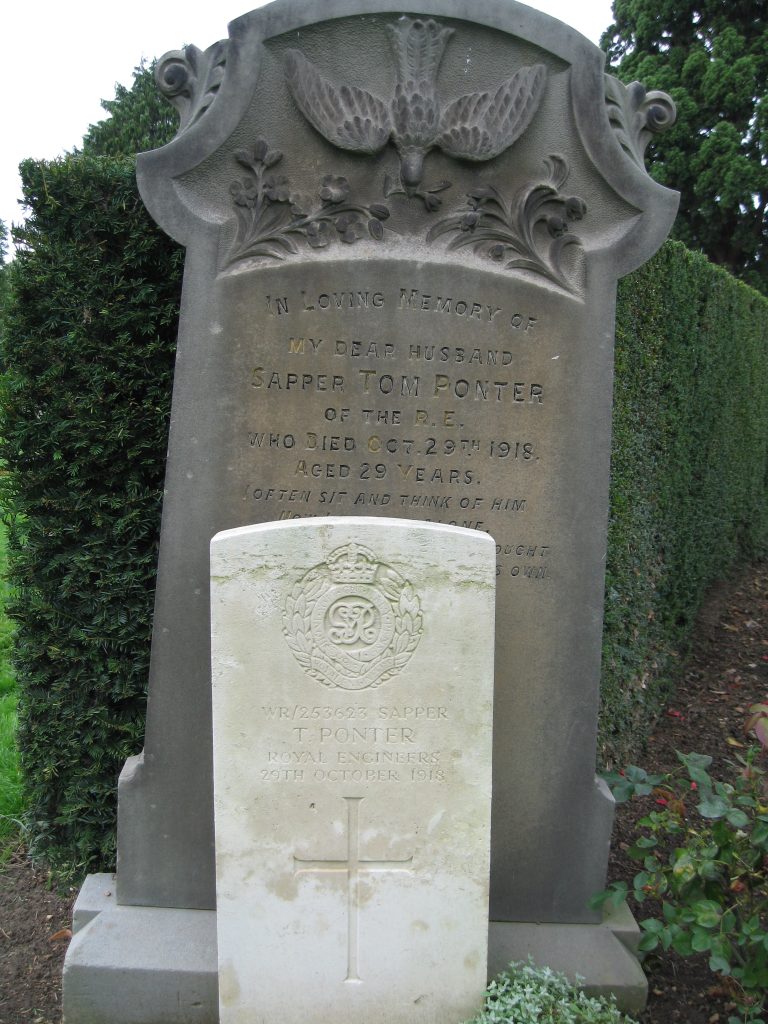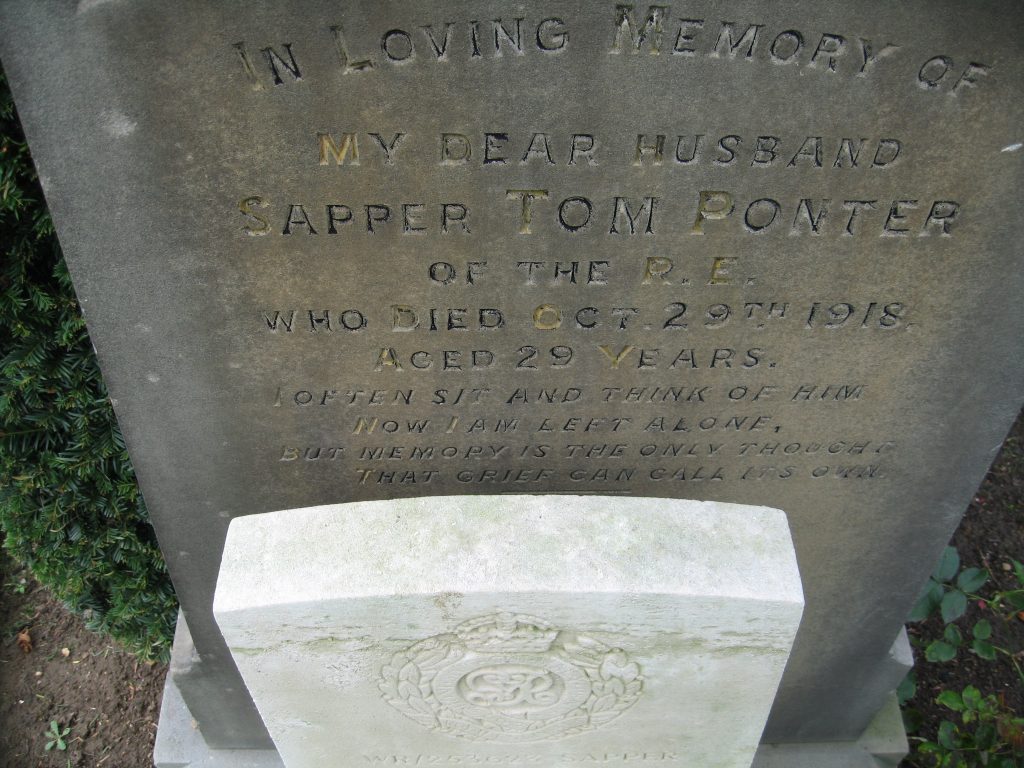119th Railway Operating Company, Royal Engineers

Tom Ponter was born in Gloucester in about May 1889. He was the son of John Alfred Ponter (1851-1917) and his wife Ann Maria (née Jefferys; 1852-1931). John Ponter was a saw sharpener at a saw mill.
At the time of the 1901 Census Tom lived with his parents and brothers William (age 20) and John (6) and sisters Annie (16) and Matilda (9) at 41 Ducie Street, in the lower Barton District of Gloucester. By the time of the 1911 Census the family had moved to 99 Hatherley Road, Tredworth, Gloucester. The census return states that John and Ann Ponter had eleven children, of whom Tom was one of eight surviving. He was at that time employed as a bench hand step maker.
On 4 April 1908 Tom joined the Territorial Force (TF), initially on a four year commitment for service in the UK. He was given the number 390 and joined the 1st South Midland Brigade, Royal Field Artillery. He stated his age to be 18 years 11 months and his occupation as a carpenter. He noted that he was currently a member of the Gloucestershire Royal Engineer Volunteers. The surviving records to his TF service confirm his attendance at an annual summer camp, between 1908 and 1914. This was usually of one or two weeks duration and held in various locations in Devon, Somerset and Wiltshire. The record states that he was discharged from the TF on 26 March 1915 as ‘being medically unfit for further military service’ – his length of service totalled six years and 352 days.
Unfortunately, very few records relating to Sapper Ponter’s Army service appear to have survived. He has a Medal Index Record Card, which shows service with the Royal Engineers, with numbers 138695 and WR/253623. Presumably, notwithstanding the reason for his discharge from the TF, he was able to rejoin the Army at a later date. The existence of the card indicates he saw service overseas and 119 Railway Operating Company was raised at Longmoor Camp, Hampshire and served on the Western Front from June 1916 to March 1919. The principal role of Railway Companies was the construction and maintenance of standard gauge rail track, to enable supplies to be taken as near to the Front as possible.
According to the Register of Soldiers’ Effects at the National Army Museum Tom died (age 29) on 29 October 1918 at Alfred Street Hospital, Prestwich, Manchester. Why he came to be there is not known, possibly he fell sick or may have suffered wounds. The recent release of Pension Record Cards, via the Fold 3 section of the Ancestry website, reveals that Tom Ponter died of bronchopneumonia, commencing on active service’. This may be an indicator that he died from the influenza pandemic raging at the time.
On 26 February 1918 Tom had married Gertrude Annie Challenger at St Paul’s Parish Church in Gloucester. She was, at 27, a year younger than Tom and a railway carriage cleaner. Tom was buried in Gloucester Old Cemetery. Initially his grave was marked by a private stone headstone on which his wife, of just eight months, had inscribed: I often sit and think of him, now I am left alone but memory is the only thought that grief can call its own. Although the headstone appeared to be in good condition and the wording legible the CWGC, unusually, has placed on of their standard headstones in front of it. Tom Ponter is commemorated on the Gloucester War Memorial.
Gertrude Ponter re-married in Gloucester, in the first half of 1920, to a Sydney Oliffe. Tom’s younger brother, named John Alfred after his father, served with the 1st South Midland Brigade, Royal Field Artillery and survived the war.

Researched by Graham Adams 15 October 2019
